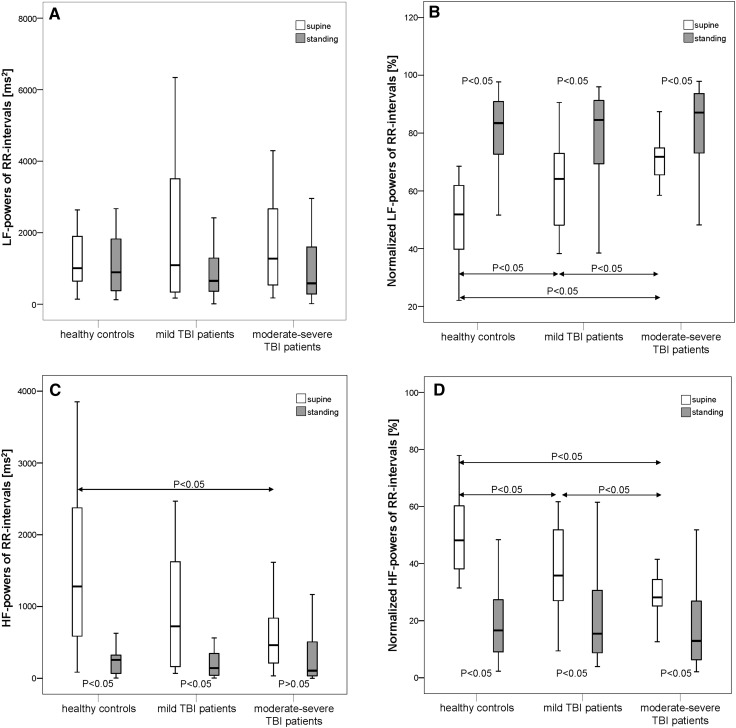Fig. 2.
Absolute and normalized low-frequency powers of RR intervals (LF-RRI) and high-frequency powers of RR intervals (HF-RRI) in supine and standing positions in 20 patients with a history of mild TBI, 20 patients with a history of moderate or severe TBI (moderate–severe TBI) and 20 healthy controls. At supine rest, normalized RRI-LF powers (LFnu-RRI powers) were significantly higher while normalized RRI-HF powers (HFnu-RRI powers) were significantly lower in the moderate–severe TBI patients group than in the patients with a history of mild TBI or the healthy controls (P < 0.05). In mild-TBI patients, LFnu-RRI powers again were significantly higher and HFnu-RRI powers were lower than in controls. In moderate–severe TBI patients, the parasympathetically mediated HF-RRI powers were significantly lower than in healthy controls. Upon standing up, all groups significantly decreased normalized HF-RRI powers, and significantly increased normalized LF-RRI powers, LF-RRI powers did not change in any group (P > 0.05). Healthy controls and mild-TBI patients significantly decreased HF-RRI powers, while moderate–severe TBI patients did not change their HF-RRI powers upon standing-up. a Absolute LF powers of RR intervals; b normalized LF powers of RR intervals; c absolute HF powers of RR intervals; d normalized HF powers of RR intervals. Data are presented as box plots. The top of the box represents the 75th percentile (upper quartile), the bottom of the box represents the 25th percentile (lower quartile), the line in the middle represents the 50th percentile (median). The ends of the whiskers represent the highest and lowest values that are not outliers or extreme values. White boxes illustrate supine values, and gray boxes illustrate standing values

